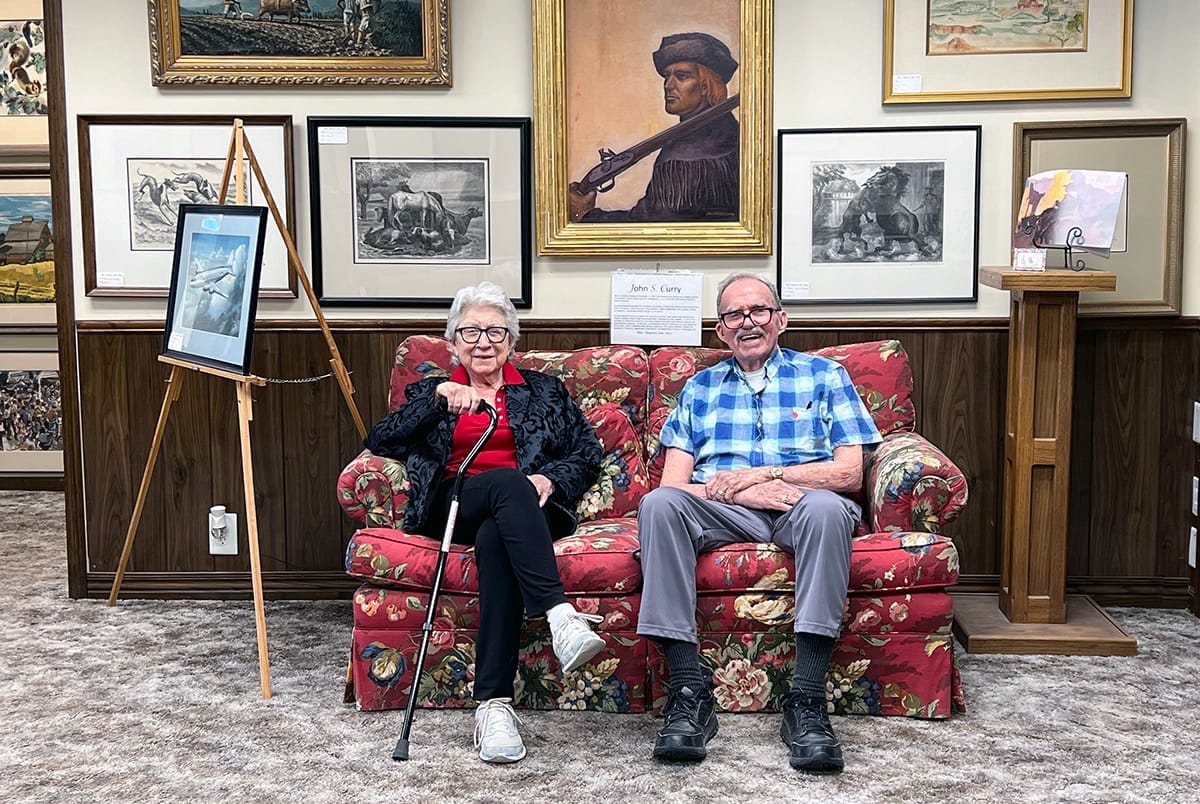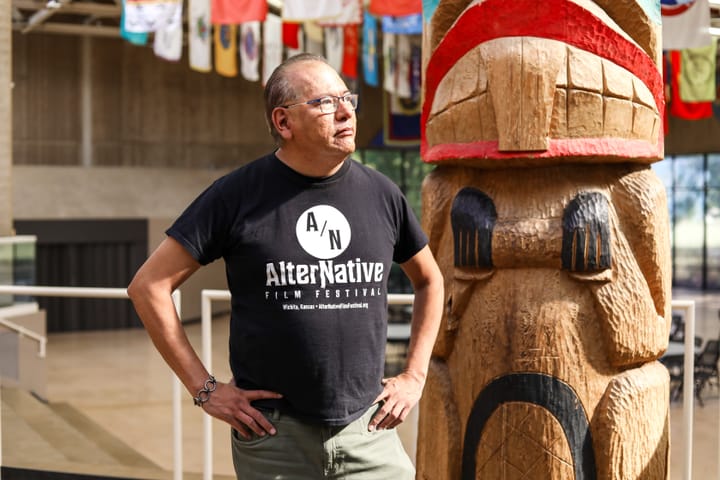A twinning combination: Artists A+B at the Wichita Art Museum
In WAM's fifth Regional Creatives exhibition, twin artists from Rose Hill, Kansas, present 13 visual double sonnets — each the size of a pair of twin beds.

The Kurdian Gallery has become my first stop when visiting The Wichita Art Museum. Located on the first floor, just a few steps away from the “Play” space frequented by younger guests, the gallery is home to WAM’s Regional Creatives exhibition series.
These exhibitions capitalize on a partnership with Harvester Arts to celebrate unique artistic visions from the surrounding community. The space itself is an open-ended equilateral triangle that invites you to bounce through, taking a different path at every visit. This dynamic quality works especially well with the current exhibition “Artists A+B: Twinverse."
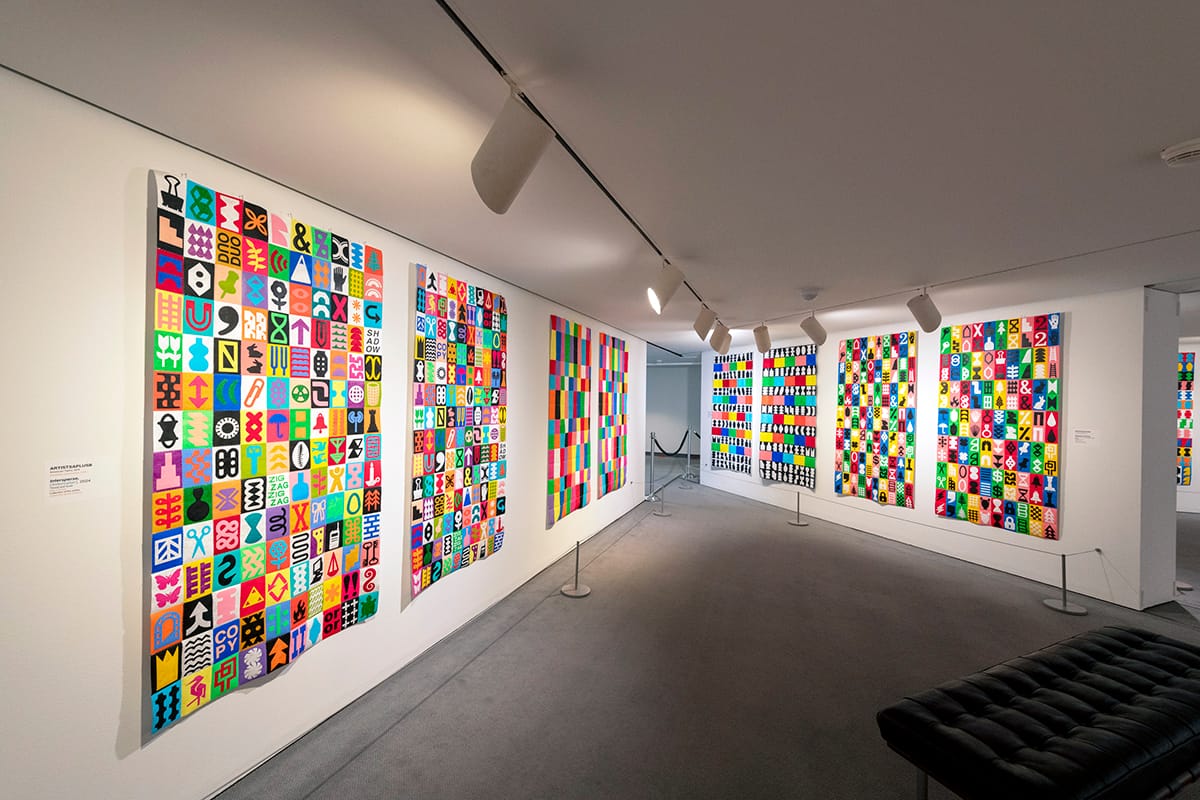
The splendid wordplay in "Twinverse" refers to both the work's sonnet-inspired structures and the immersive "universe" of the exhibition. Amy and Beth, twins and collaborators who make work together as A+B, present 13 “twin-sized” diptychs, all identical in format, all created in 2024. Systematic consistency is a prominent theme (repeated scale, media, font, color palette, abstract forms, and non-fussy imagery), but the artists use these constants to direct attention to the specific compositional experiments playing out in each work. I love spatial games (sudoku, Concentration, crossword puzzles), and this exhibition certainly pulls on that part of my brain. The “twin” premise invites all kinds of relational conversations.
Sign up for SHOUT Weekly, our free email newsletter
Stay in the know about Wichita's arts and culture scene with our event calendar and news roundup.
No spam. Unsubscribe anytime.
As an artist who identifies as a colorist, I was easily drawn to “Twinsburg Sonnet.” At first glance, it is pure color field joy, all simultaneous contrasts and vibrating cells of horizontal color bars situated in grids on two vertical Tyvek panels. But a longer look reveals an uncanny structure in this work. The free play of color on the left panel is mirrored on the right — a scheme that is quickly understood, but fun to confirm as your eyes bounce back and forth.
What makes this work (and others) striking is the lack of a dominance and relief hierarchy.[1] Here, the echoing presentation pulls the viewer into a measured read of the piece, with everything coming to an identical and balanced resolution. This makes the abstraction less like an artistic declaration and more about audience participation.
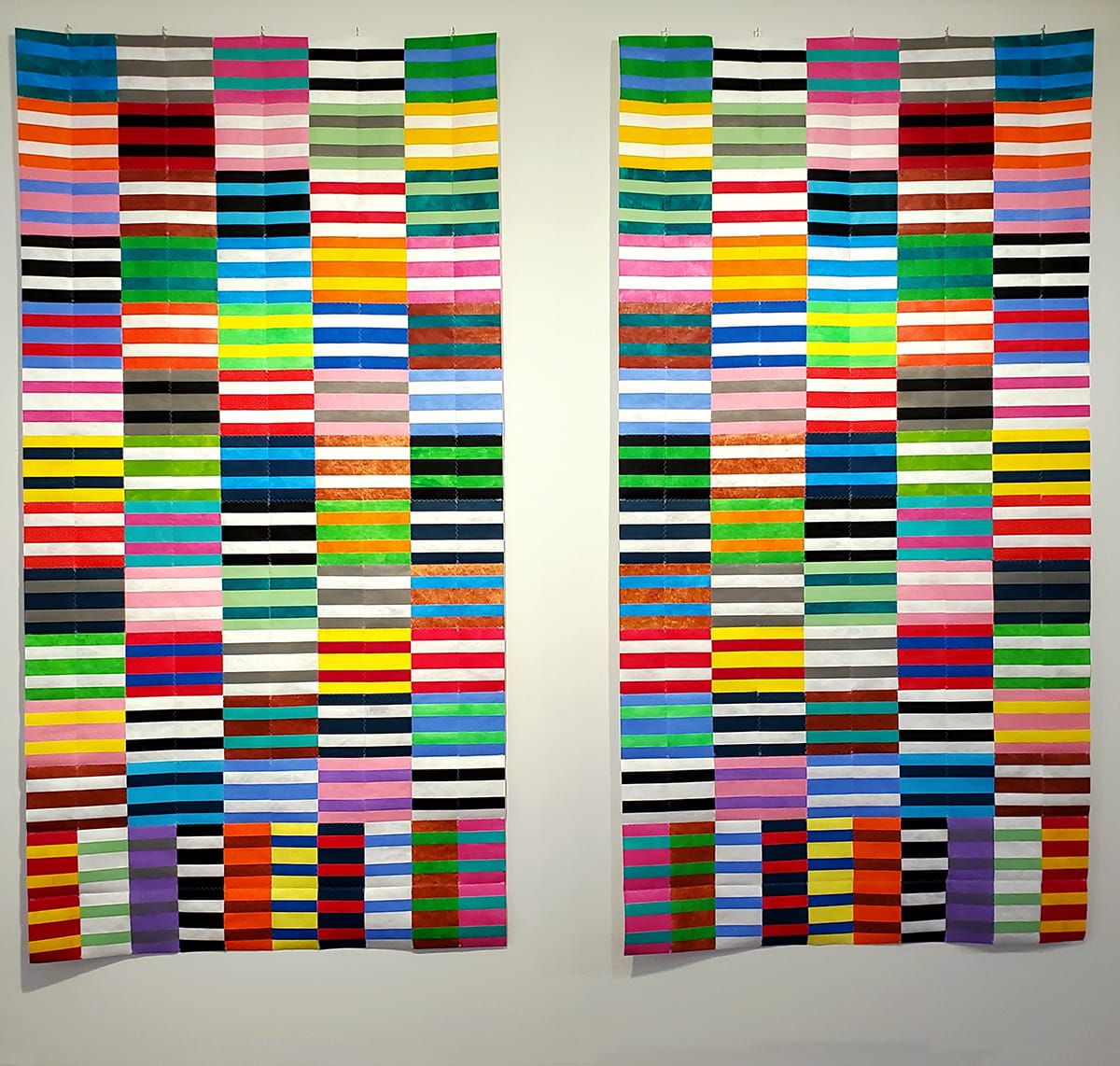
By contrast, “Tableau Sonnet” offers a stark, black-and-white outpouring of data. Here, the two vertical panels are filled with individual glyphs, each placed within a single box in the larger grid composition, with black images on a white ground on the left panel and white images on a black ground on the right one. The randomized flow of images is made up of symbols that are iconic, occasionally ambiguous, and delightfully all over the map in terms of context. For instance, the silhouette of a pear sits between an aerial view of an airplane and a graphic of two vertical lines with squiggles at their core. A wrench appears between a cartoonish scorpion and a stylized depiction of a seashell. This is a different game.
As I moved my eyes left to right, up and down, finding differences and similarities, I was keenly aware of the materiality of these pieces. The artists are painting, cutting, pasting, and stitching on Tyvek — a synthetic fiber used mainly in building construction and for things like protective coveralls. The die-cut shapes and industrial material could feel detached and indirectly manufactured. But the occasional irregular stitch, brushstroke, and lightweight drape upon the wall all contribute to the warm and personal vibe of the work. They recall educational manipulatives from elementary school that build vocabulary through play.
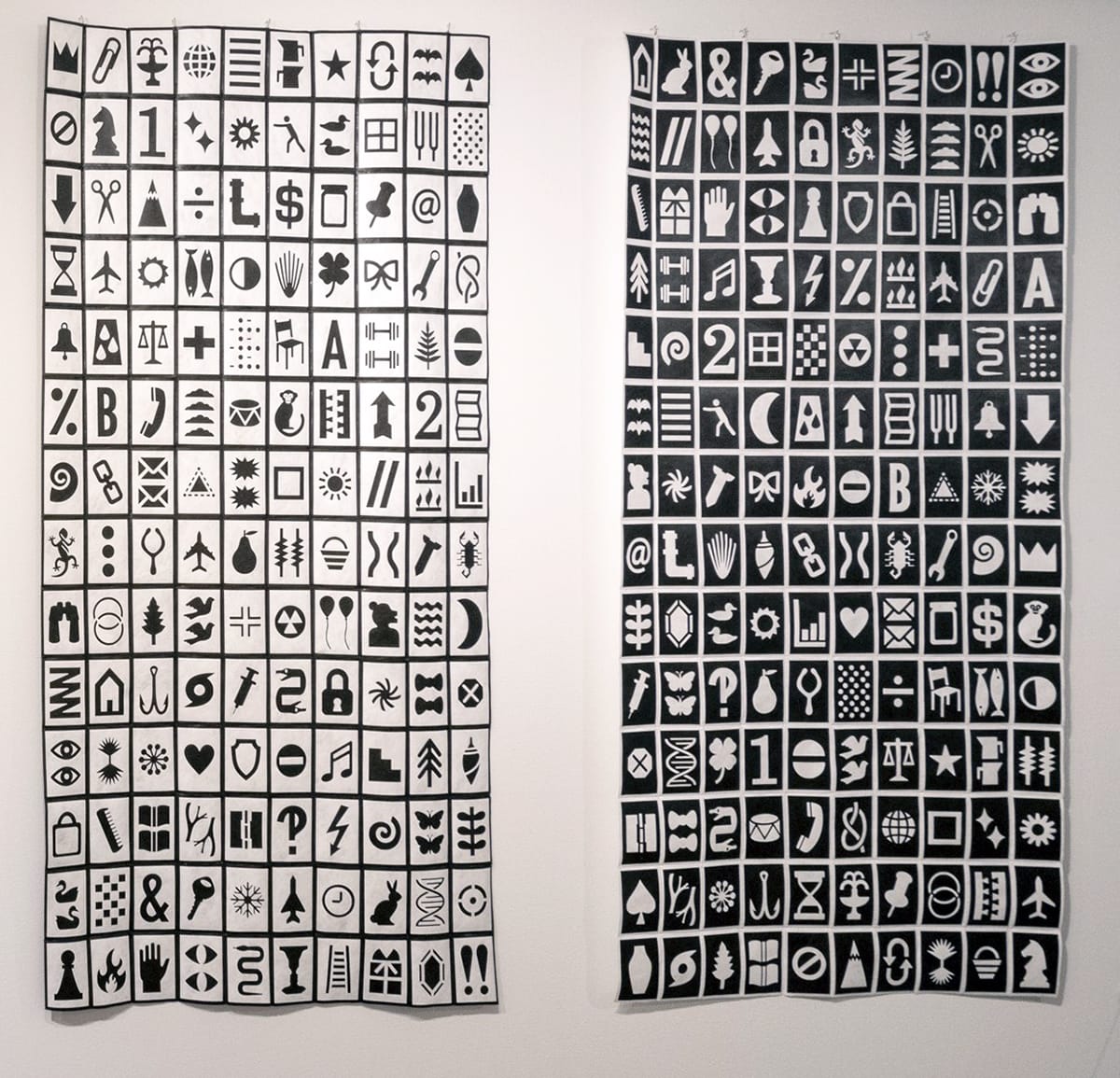
Of course, there is an academic component at play here too. A+B compose each of these works as visual representations of a double sonnet, a literary conversation between two panels. With my limited knowledge of poetic structures, I wondered how much homework I should do to dive into this exhibition (or how guilty I should feel about not doing my homework).
One component that is obvious is the couplet introduced at the bottom of many panels across the gallery. This is evident in “Convoy Sonnet.” A horizontal pairing of abstract forms plays repeatedly across the surface of both panels, echoing in positive/negative signals with the steadiness of a metronome. And then, in the final stanzas, there is a switch to a vertical repetition. According to The Poetry Foundation, volta is an Italian term that describes “the turn of thought or argument” in a sonnet. A+B use this nonverbal device here and in other wingding compositions to signal for viewers to look more carefully, and it was my clue to research the sonnet style utilized by the artists.
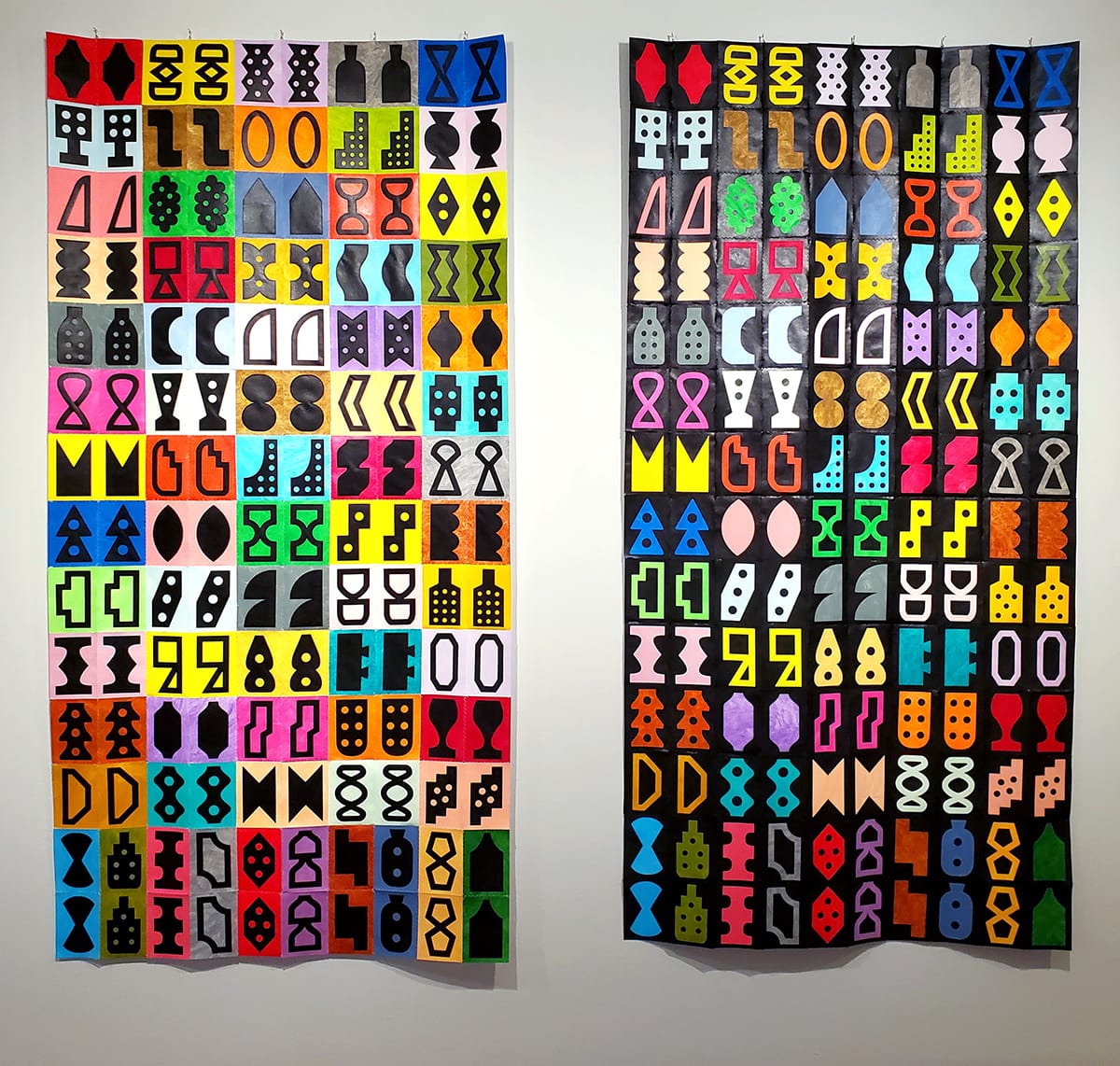
Even though I love pure abstraction, I also enjoy “Solidarity Sonnet,” a two-panel work composed of words stacked vertically, in all caps and in varied text and background colors. This piece tickles the verbal regions of my brain by engaging in several games at once. There is the sing-songy rhyming of multisyllabic words like “reflection” and “connection” across the vertical divide. There is the fun of building context by combining the rhyming words and thinking about how they flesh out the experience of “twindom.” And then there is the simple joy of watching A+B assemble enough 10-letter words to complete each field. “Solidarity Sonnet” in particular made me contemplate the special relationship of these artists and my own experiences with fruitful collaborations and treasured partnerships.
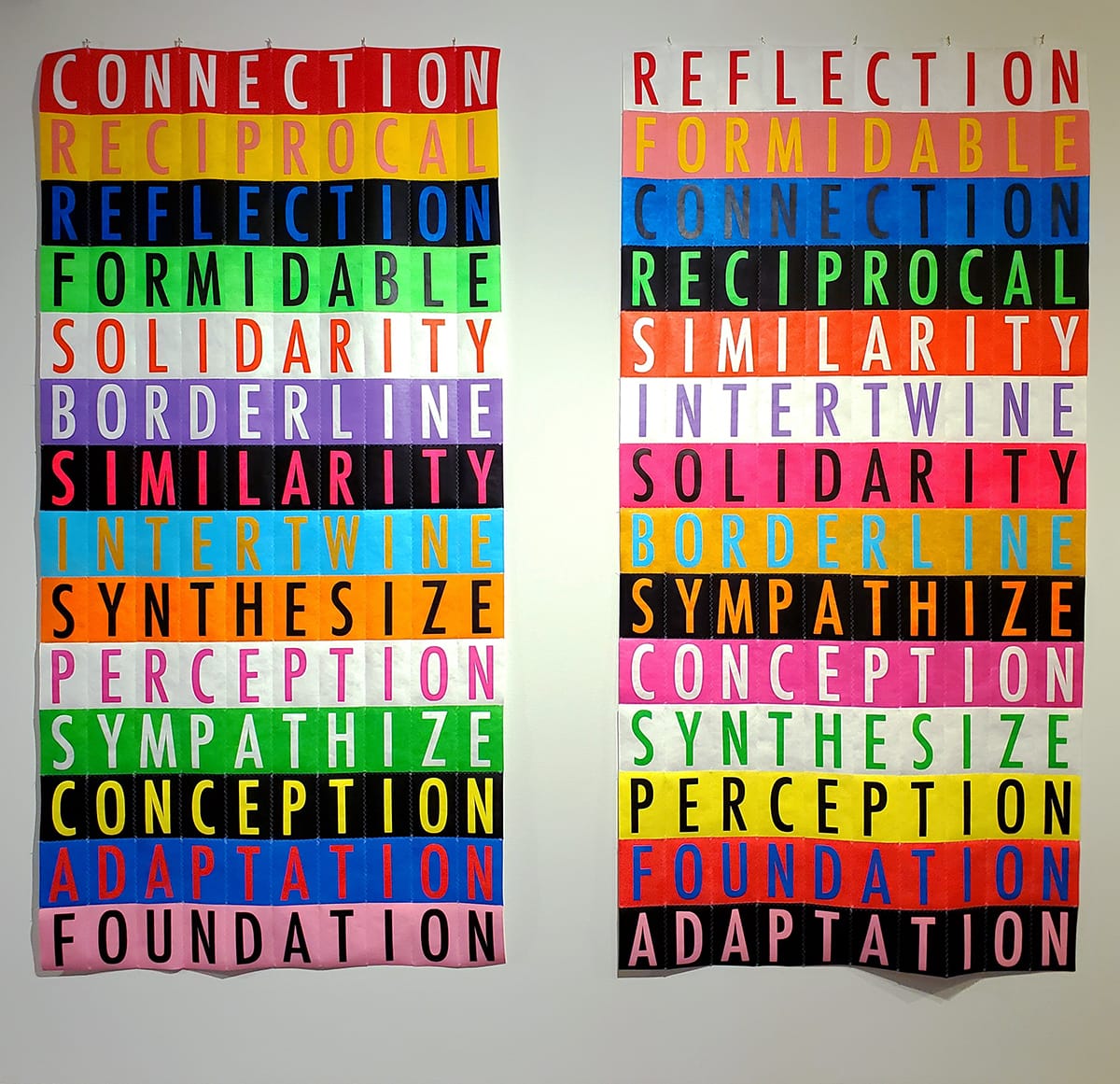
After seeing so many experiments across this exhibition, it is easy to appreciate “Compendium Sonnet.” It's an all-hands-on-deck mishmash of every previously mentioned tool: text, abstract forms, iconographic symbols, color play, and black-and-white graphics. Like quilts across two twin beds, these panels read as both comfortable and familiar. They could represent the nuanced messages shared across a common space between two longtime roommates.
As disciplined artists, A+B certainly know how to take a set of concepts through their paces. But I think their real strength lies in their ability to make the systematic feel warm and playful. They may have foregone traditional hierarchies about dominance and submission in favor of a more equitable and dualistic presentation, but, in doing so, they have also invited us in as participants to be a crucial third wheel in this expansive “Twinverse.”
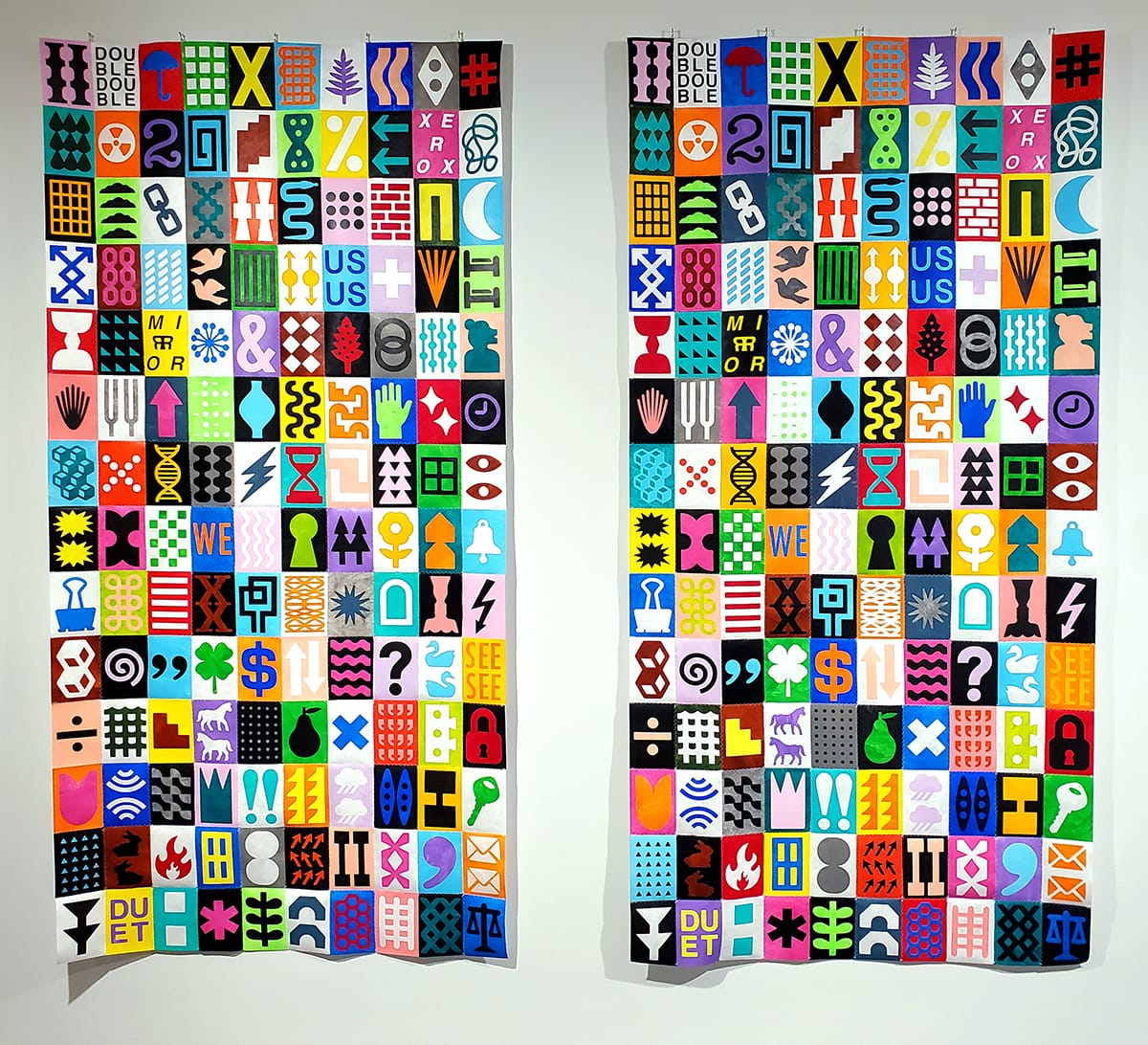
The Details
"Artists A+B: Twinverse"
November 8, 2024-March 23, 2025, at the Wichita Art Museum, 1400 Museum Blvd. in Wichita
Admission to the Wichita Art Museum is free. Special exhibitions and some events are separately ticketed.
WAM is open to the public from 10 a.m.-5 p.m. Wednesday through Sunday with extended hours until 9 p.m. on Fridays.
Artists A+B will deliver an artist talk for Senior Wednesday on February 5 at the museum (free for WAM members, $2 for the general public).
Learn more:
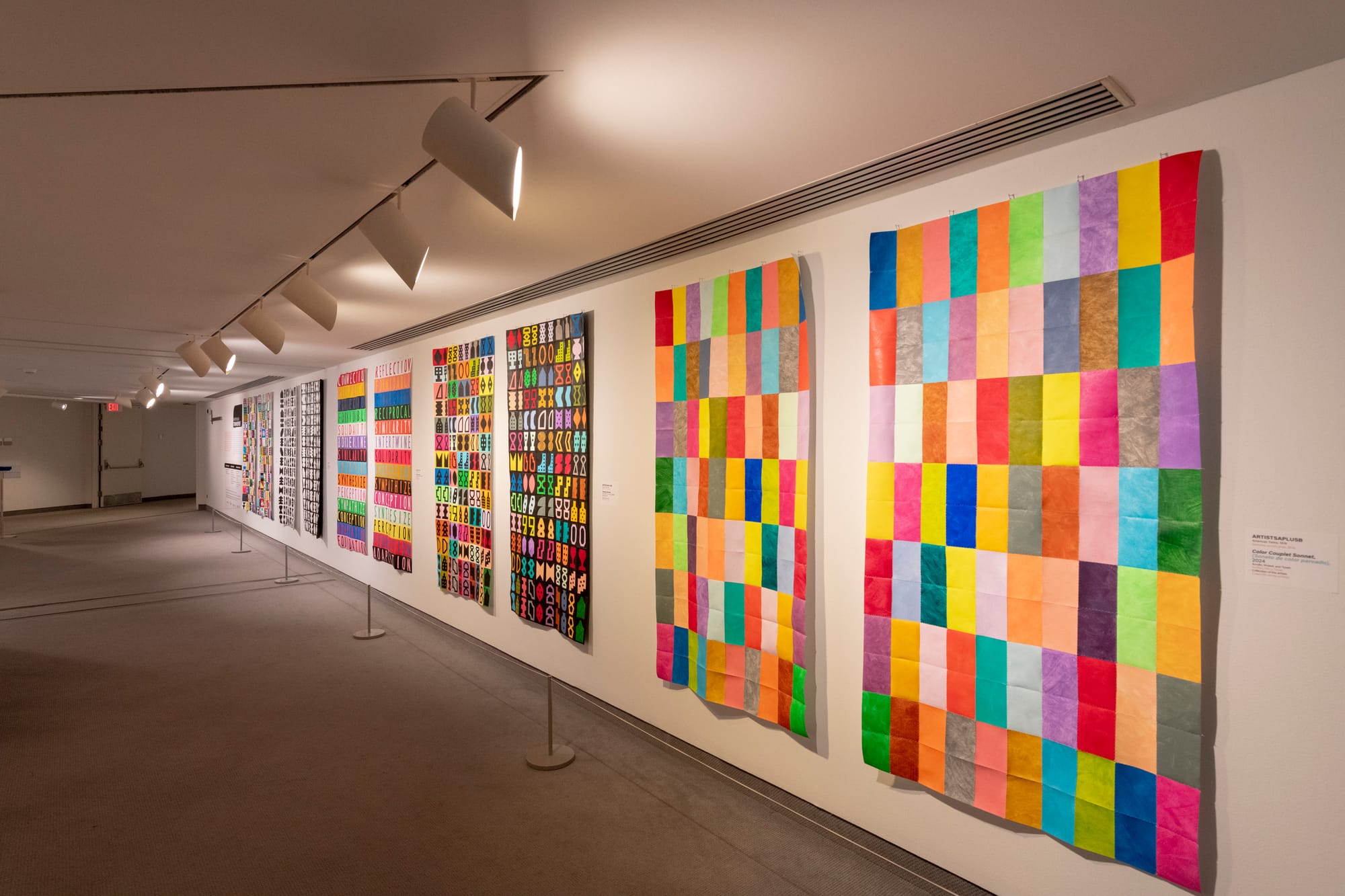
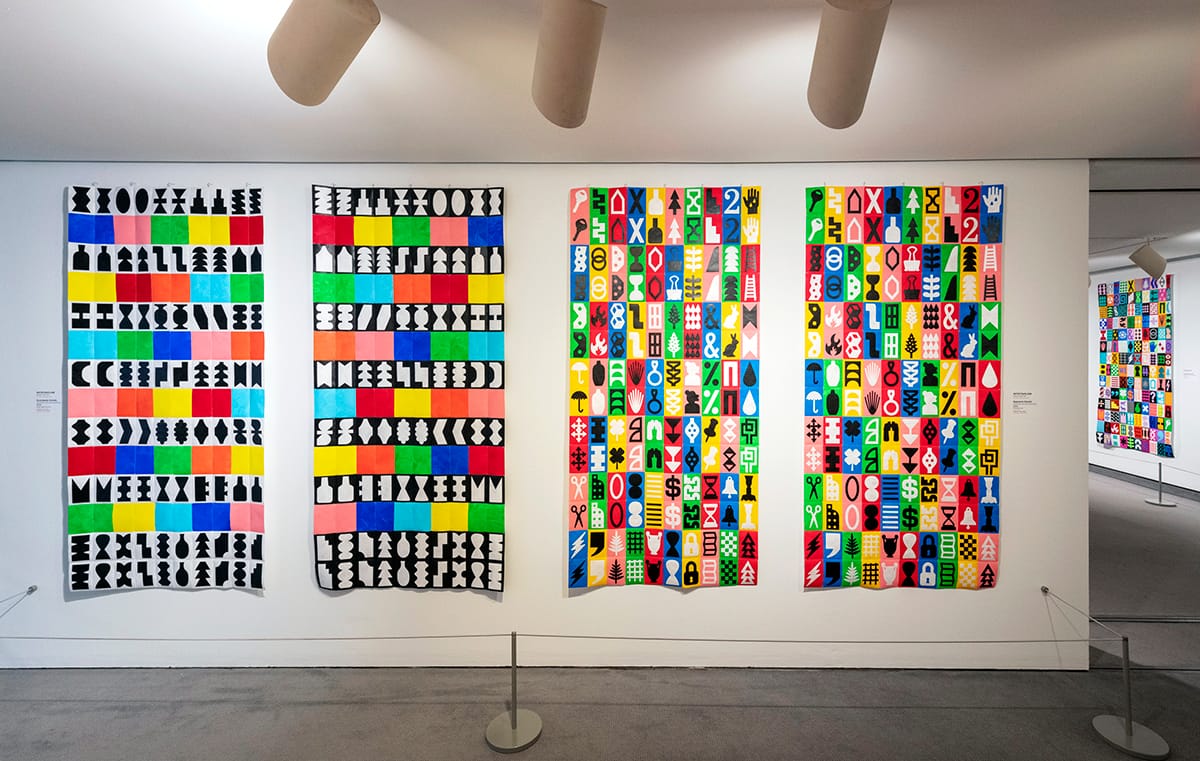
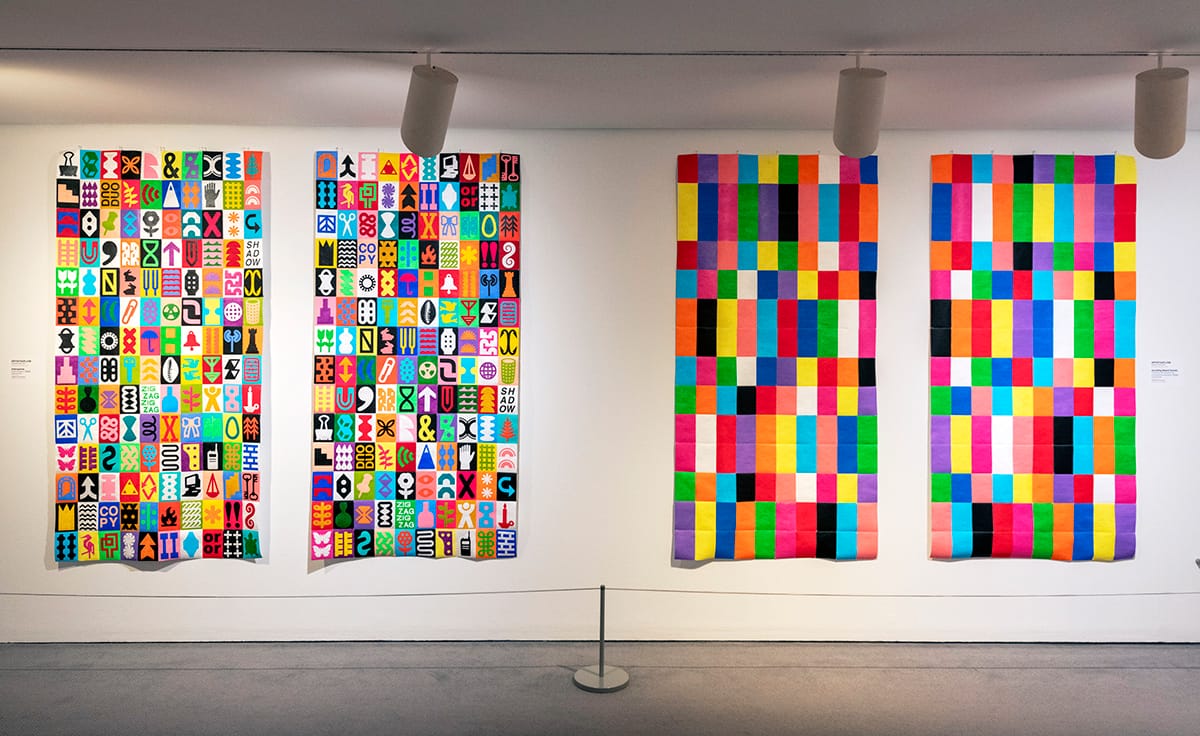
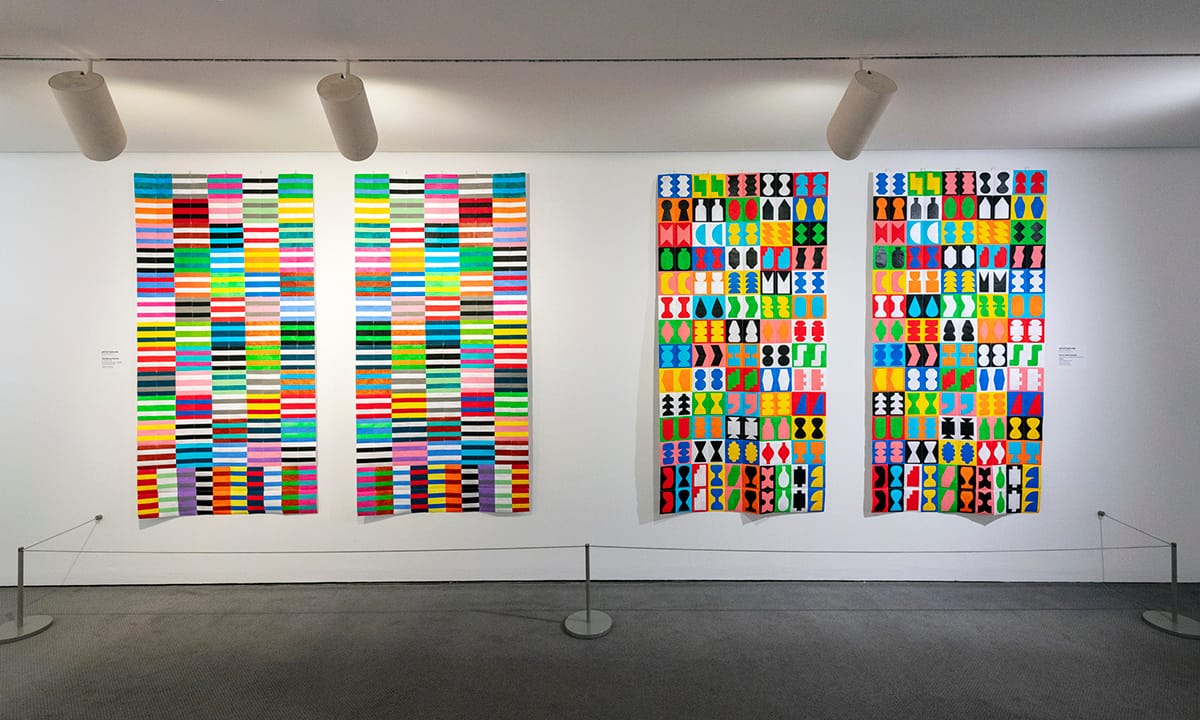
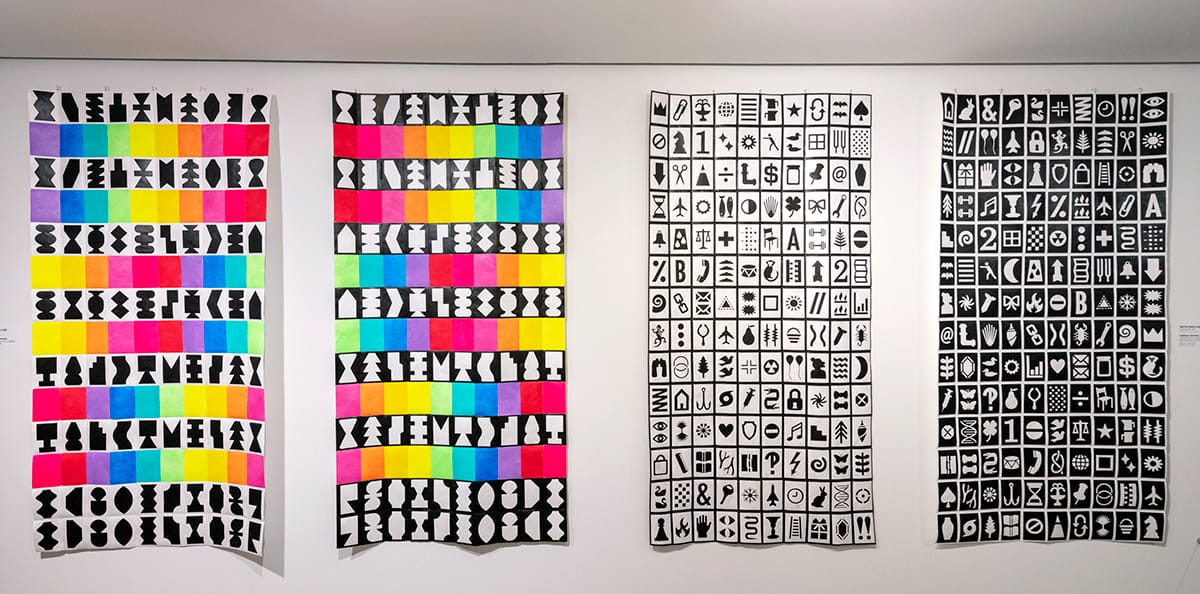
"Artists A+B: Twinverse" installation views. Photos by Kevin Kelly for the SHOUT.
1.This idea, traditionally taught in design theory, states that certain elements should assume more importance and dominate (more than 50%) a composition, while lesser elements offer visual relief.
Kevin Kelly is an artist and educator. He lives and paints in Wichita and teaches art at Butler County Community College in El Dorado, Kansas.
More visual arts coverage from the SHOUT
 The SHOUTJacinda Hall
The SHOUTJacinda Hall
 The SHOUTEmily Christensen
The SHOUTEmily Christensen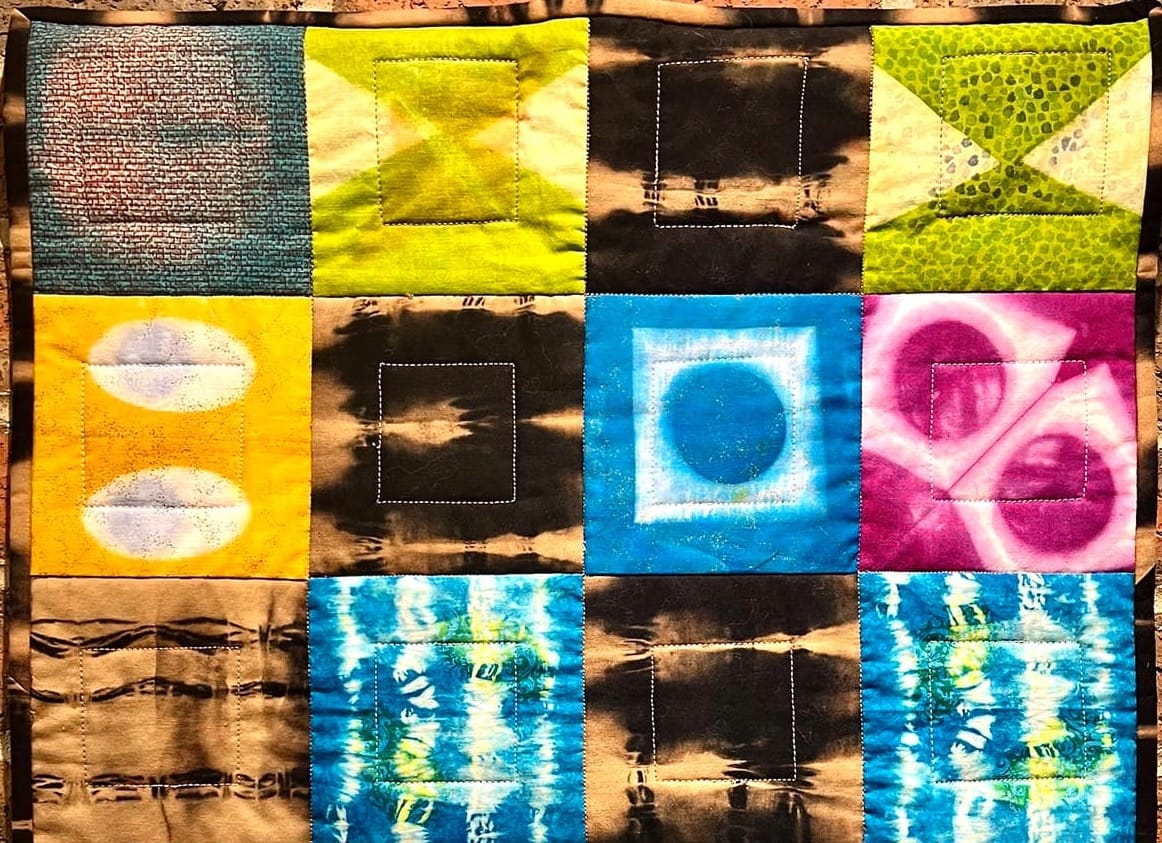
 The SHOUTConnie Kachel White
The SHOUTConnie Kachel White